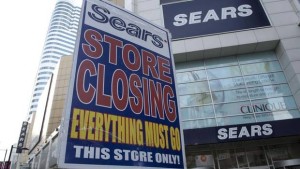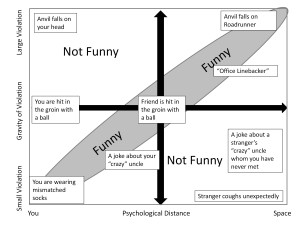As children growing up, there was nothing like a good ol’ fashion story to entertain us, influence our moods, and teach us new and exciting things. One of my favorites, “The Emperor’s New Clothes” taught me a great deal about the value of having honest friends, the power of collective ignorance, and the pitfalls of being vain. These lessons, along with making sure my pants zipper is always up, have stuck with me throughout my life and have played a part in shaping who I am today.
As adults, we also like great stories, and companies capitalize on this in order to foster that emotive connectivity to their brand, and strengthen the positive associations that the company is trying to convey. Premium and luxury brands in particular are often excellent story tellers, as they are not merely selling products, but lifestyles, and they use the uniqueness and sophistication of this story as part of their justification of a higher price point.
So how do companies tell a great story and use it to strengthen their brand?
Developing Your Story
The story itself is obviously critical as it is the fundamental message you want to tell your audience. Crafting this story, however, is not as easy as it appears. The story needs to provide information that will identify what we have in common with the brand, in order to develop a shared identity. More specifically, the story needs to have the following features:
Explanation: An explanation of what life is presently like without the product/brand of interest, a setting in which a conflict exists. These could be societal issues, common personal issues, physical issues, etc.
Meaning: Helping your audience gain an understanding of who they are or aspire to be, that will resolve the conflict. For example, who would you like to be? How would you like your problem resolved? What do you want to do?
Message: A narrative that underlines the lessons being learned. How will your issues and concerns be resolved? (Hint, using the brand)
Ritual: A means to address the lessons being learned in the audience’s lives. For instance, by being a user of this brand, you become part of an association of enlightened customers, and by telling others the story you can help enlighten other like-minded souls as to how their problems can be resolved.
Growing up in Canada, and having an affinity for fashion, I find it natural to feel a sense of pride in Canada Goose’s growth trajectory over the last few years, much of it owing to the story that they tell with their advertisements. Over the last year or so, their message has been “Ask Anyone Who Knows”, and it has been an incredibly successful campaign which has helped attract aspiring luxury outdoorsmen and women, and more, all across the globe.


The story behind this campaign is as follows:
Explanation: It gets really cold out sometimes
Meaning: You are an important person, and your life should not have to slow down because it is cold out.
Message: People have been going about their lives for many years living life and getting things done. They do this by wearing Canada Goose jackets.
Ritual: If you wear a Canada Goose jacket, you too will be able to live life and get things done. People will look to you for inspiration in solving this cold weather problem, as you have to the people before you.
Identify Who The Hero Is
Many stories have a victim who is saved by the hero, and in the past, consumers were always the ones with the problem and the brand being presented to them were the heroes. Those stories utilized their functional benefits in order to satisfy our needs. In reality however, increasing brand loyalty requires companies to tap into our emotional and self-expressive needs, and a common human desire is to be the hero. Nowadays, companies are becoming more and more aware of this and are repositioning their audience as the hero, with their product as the mighty sword enabling the consumer’s success.
Canada Goose is a prime example of a brand that has succeed in doing this. By wearing a Canada Goose jacket, now you are an expert in dealing with cold weather and you can inspire others to do the same (thereby further increasing their sales). This has the double benefit for Canada Goose of having the customer also be the advertisement, maximizing the return on investment of their ads and increasing overall profit margins; something which is common among all luxury brands, and good for any company.
Back Up Your Story
Telling a powerful story will only translate into success if your brand actually lives up to the message you are trying to convey. As a result, your employees need to buy into the culture of the company and believe in the solutions the company hopes to provide to its customers. One considerable advantage of developing a story to go along with your brand promise is that the story can motivate your employees to work towards the company vision, thereby satisfying the customer need that your brand’s story aspires to resolve.
For 60 years, Canada Goose has targeted its message towards research teams in the Antarctic, oil riggers, police officers, and other people who are required to spend considerable amounts of time in the cold. By securing the endorsements of the “cold experts”, the brand can now lay claim to the fact that if you ask anyone who knows, they will indeed recommend a Canada Goose jacket.
Furthermore, Canada Goose has not succumbed to the pressure of keeping costs low and manufacturing in Asia, since doing so would result in a loss of legitimacy as a brand, and render useless the goodwill that their name provides. By staying in Canada, Canada Goose is able to position itself as a truly Canadian company, leveraging the idea that most people have of Canadians living in igloos.

Telling an effective story enhances your brand recognition and loyalty, allowing your audience to connect with your brand on a deeper and more sustainable level. Canada Goose has been effective at this, and has seen incredible growth over the last few years as a result. I hope you have enjoyed my story about stories – I am now going to put on my Canada Goose jacket and head home to my igloo.
[i][ii]









 Home
Home